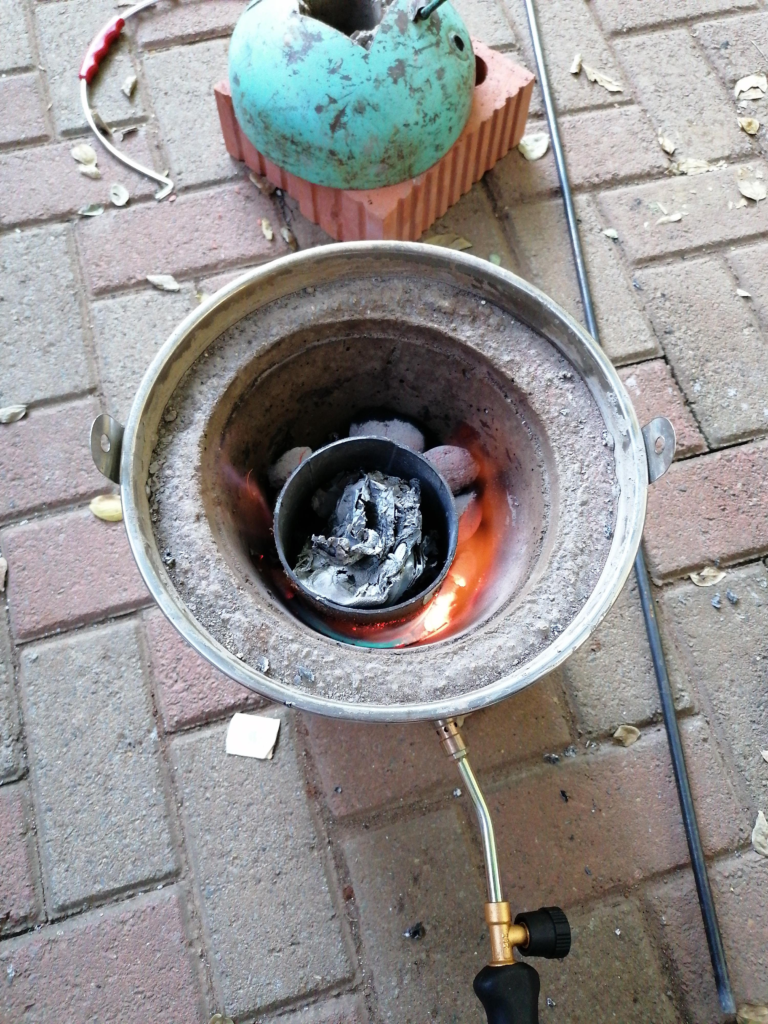
In this article, we will explore the question “How to melt aluminium without a foundry?
- How to melt aluminium without a foundry?
- What are the risks of melting aluminum with a forced air propane burner?
- What are the benefits of melting aluminum with a forced air propane burner?
- What are the disadvantages of melting aluminum with a forced air propane burner?
- What are the alternatives to using a forced air propane burner to melt aluminum?
- Helpful Resources
How to melt aluminium without a foundry?
Melting aluminum without a foundry can be done using the following methods:
1. Safety Precautions: It’s important to take safety precautions when melting aluminum outside of a foundry. Avoid unsafe methods such as melting aluminum in large bonfires or on BBQ grills. Use the necessary tools for handling molten metal, such as metal tongs, a metal strainer or stirring rod, and a crucible, and ensure a safe and controlled environment for the melting process.
2. Necessary Tools: To melt aluminum without a foundry, you will need a pair of metal tongs, a metal strainer or stirring rod, a crucible, and a heat source such as a propane blowtorch or a forced air propane burner.
3. DIY Foundry: It’s possible to make a DIY aluminum foundry at home using materials such as metal buckets, stove pipes, and a hair dryer. This setup can be used to melt aluminum in a controlled environment.
4. Crucible: The aluminum is melted in a crucible, which is a container that can withstand the high temperatures of the melting process. A crucible can be made from materials such as a 16 oz propane bottle with the top cut off.
5. Heat Source: A heat source, such as a propane blowtorch or a forced air propane burner, is used to provide the necessary heat to melt the aluminum. This heat source should be used in a well-ventilated area and with appropriate safety measures in place.
6. Melting Process: Once the DIY foundry or heat source is ready, the aluminum can be placed in the crucible and heated until it reaches its melting point. The molten aluminum can then be poured into molds for various casting purposes.
7. Ventilation: It’s important to ensure proper ventilation during the melting process to prevent the buildup of fumes and gases. This can be achieved by working in an open or well-ventilated area.
8. Reuse of Aluminum: The pure aluminum ingots produced from the melting process can be reused for later castings and will not produce as much slag as other methods. This allows for the efficient recycling of aluminum materials.
9. Supervision and Cleanup: It’s essential to supervise the cooling process of the foundry and to clean up any charcoal ash or debris after the melting process is complete. This helps maintain a safe working environment and prevents potential hazards.
10. Free Furnace: It’s possible to make a free aluminum melting furnace using wood as the fuel. This furnace is capable of melting aluminum at a controlled temperature.
In summary, melting aluminum without a foundry can be done using DIY setups and appropriate safety measures. By following the necessary precautions and using the right tools, individuals can melt aluminum for various casting and recycling purposes.
What are the risks of melting aluminum with a forced air propane burner?
The risks of melting aluminum with a forced air propane burner include:
1. Fire Hazard: The use of propane burners for melting aluminum can pose a fire hazard if not used properly. It’s important to follow safety guidelines and take necessary precautions to prevent fires.
2. Explosion Risk: Propane is a highly flammable gas that can explode if not handled properly. It’s important to use propane burners in a well-ventilated area and avoid any potential sources of ignition.
3. Porosity: Melting aluminum with a forced air propane burner can lead to porosity in the final product due to the presence of hydrogen gas. This can be mitigated by using degassing methods such as chlorine tablets or injecting nitrogen prior to pouring.
4. Contamination: The use of propane burners for melting aluminum can lead to contamination of the final product if the burner is not clean or if the propane tank is not properly maintained.
5. Inhalation of Fumes: The melting process can produce fumes and gases that can be harmful if inhaled. It’s important to work in a well-ventilated area and wear appropriate personal protective equipment.
6. Burns: Molten aluminum can cause severe burns if not handled properly. It’s important to use the necessary tools for handling molten metal, such as metal tongs, and to avoid skin contact with the molten aluminum.
In summary, the risks of melting aluminum with a forced air propane burner include fire hazard, explosion risk, porosity, contamination, inhalation of fumes, and burns. It’s important to take necessary safety precautions and follow guidelines to ensure a safe and controlled environment for the melting process.
What are the benefits of melting aluminum with a forced air propane burner?
The benefits of melting aluminum with a forced air propane burner include:
1. Efficiency: A forced air propane burner can provide a high level of heat output, making it an efficient method for melting aluminum.
2. Control: The use of a forced air propane burner allows for greater control over the melting process, as the heat output can be adjusted to achieve the desired temperature.
3. Versatility: A forced air propane burner can be used for melting aluminum in a variety of settings, including outdoor environments and DIY setups.
4. Cost-Effective: Propane is a relatively inexpensive fuel source, making it a cost-effective option for melting aluminum.
5. Ease of Use: A forced air propane burner is easy to use and requires minimal setup, making it a convenient option for melting aluminum.
6. Reduced Porosity: The use of a forced air propane burner can help reduce porosity in the final product by degassing the molten aluminum with chlorine tablets or injecting nitrogen prior to pouring.
7. Recycling: Melting aluminum with a forced air propane burner allows for the efficient recycling of aluminum materials, reducing waste and promoting sustainability.
8. High Temperature: A forced air propane burner can provide a high enough temperature to melt aluminum, which has a relatively low melting point compared to other metals.
9. Flexibility: A forced air propane burner can be used with a variety of crucibles and molds, allowing for flexibility in the casting process.
10. Availability: Propane burners are widely available and can be purchased at hardware stores or online, making them a readily accessible option for melting aluminum.
In summary, the benefits of melting aluminum with a forced air propane burner include efficiency, control, versatility, cost-effectiveness, ease of use, reduced porosity, recycling, high temperature, flexibility, and availability.
What are the disadvantages of melting aluminum with a forced air propane burner?
The disadvantages of melting aluminum with a forced air propane burner include:
1. Porosity: Melting aluminum with a forced air propane burner can lead to porosity in the final product due to the presence of hydrogen gas. This can be mitigated by using degassing methods such as chlorine tablets or injecting nitrogen prior to pouring.
2. Contamination: The use of propane burners for melting aluminum can lead to contamination of the final product if the burner is not clean or if the propane tank is not properly maintained.
3. Inconsistent Temperature: The temperature of the propane burner flame can be inconsistent, leading to uneven heating of the aluminum and potential defects in the final product.
4. Safety Risks: The use of propane burners for melting aluminum can pose safety risks such as fire hazard and explosion risk if not used properly. It’s important to follow safety guidelines and take necessary precautions to prevent accidents.
5. Environmental Concerns: The use of propane burners for melting aluminum can contribute to air pollution and greenhouse gas emissions. It’s important to use propane burners in a well-ventilated area and to consider alternative, more sustainable methods for melting aluminum.
6. Limited Capacity: Propane burners may have limited capacity for melting large quantities of aluminum, which can be a disadvantage for larger-scale projects.
In summary, the disadvantages of melting aluminum with a forced air propane burner include porosity, contamination, inconsistent temperature, safety risks, environmental concerns, and limited capacity. It’s important to consider these factors when choosing a method for melting aluminum and to take necessary precautions to ensure a safe and controlled environment for the melting process.
What are the alternatives to using a forced air propane burner to melt aluminum?
There are several alternatives to using a forced air propane burner to melt aluminum, including:
1. Oil Furnace: An oil furnace can be used as an alternative to a traditional foundry or propane burner for melting aluminum. Oil furnaces provide a controlled environment for heating and can reach the high temperatures required to melt aluminum.
2. Wood Stove: Melting aluminum in a wood stove is a possibility, as some users have reported success in melting aluminum using this method. However, it’s essential to ensure proper ventilation and use the right type of container for the melting process.
3. Charcoal or Wood Fired Furnace: A charcoal or wood-fired furnace can be used to melt aluminum, as these fuels can provide the high temperatures required for the melting process. Charcoal is often preferred over wood, as it produces less smoke and soot.
4. Homemade Foundry: A DIY foundry can be created using materials such as steel containers, refractory cement, and insulation. This setup can be heated using various methods, such as propane, natural gas, or oil, to reach the high temperatures required for melting aluminum.
5. Induction Furnace: An induction furnace is an alternative to a traditional foundry or propane burner for melting aluminum. Induction furnaces use electricity to heat the aluminum, providing a controlled environment for the melting process.
6. Arc Furnace: An arc furnace can be used to melt aluminum by using an electrical current to create a plasma that heats the aluminum. This method is not as common as other methods but can be an alternative for small-scale melting operations.
7. Salt Furnace: A salt furnace is another alternative for melting aluminum. Salt furnaces use a mixture of salt and charcoal to generate heat, which can reach the high temperatures required for melting aluminum.
8. Flare Furnace: A flare furnace is a type of foundry that can be used for melting aluminum. Flare furnaces use a gas-fired burner to generate heat, providing a controlled environment for the melting process.
9. Rotary Kiln: A rotary kiln is a type of furnace that can be used for melting aluminum. Rotary kilns use a rotating drum to distribute heat evenly, making them suitable for melting aluminum.
10. Box Furnace: A box furnace is a simple and cost-effective alternative for melting aluminum. Box furnaces are made from refractory materials and can be heated using various methods, such as propane or natural gas, to reach the high temperatures required for melting aluminum.
When choosing an alternative to a forced air propane burner for melting aluminum, it’s essential to consider factors such as safety, cost, availability, and the specific requirements of your melting project.
Helpful Resources
- https://www.wikihow.com/Melt-Aluminum
- https://youtube.com/watch?v=ZdcNf2rYaHQ
- https://www.instructables.com/Quick-cheap-and-dirty-aluminum-melting-furnace-s/
- https://youtube.com/watch?v=e8PCFzg_D_E
- http://www.chaski.org/homemachinist/viewtopic.php?t=99414
- https://www.reddit.com/r/Metalfoundry/comments/ff2yaz/aluminum_melting_in_a_propanenatural_gas_furnace/?rdt=47953
- https://www.reddit.com/r/Metalfoundry/comments/31tyz2/problem_with_forced_air_propane_burner/?rdt=52484
- http://forums.thehomefoundry.org/index.php
- https://www.sciencedirect.com/science/article/pii/S1359431110004746
- https://www.scrapmetalforum.com/dismantling-breaking-down-maximizing-scrap/19736-smelter-al.html
- https://thecorrecter.com/is-aluminium-dust-harmful/
- https://thecorrecter.com/is-aluminium-foil-a-good-insulator-of-heat/
- https://thecorrecter.com/is-aluminium-oxide-ionic-or-covalent/
- https://thecorrecter.com/can-aluminium-be-magnetised/
- https://thecorrecter.com/is-aluminium-monatomic-or-diatomic/
- https://thecorrecter.com/is-aluminium-toxicity-reversible/
- https://thecorrecter.com/what-to-do-if-you-accidentally-eat-aluminum-foil/
- https://thecorrecter.com/can-you-put-aluminium-foil-in-an-air-fryer/
- https://thecorrecter.com/what-size-aluminium-wire-for-125-amp-service/
- https://thecorrecter.com/how-to-remove-scratches-from-aluminium-4/
- https://thecorrecter.com/how-is-aluminium-mined-2/
- https://thecorrecter.com/does-aluminium-cause-dementia-2/
- https://thecorrecter.com/is-aluminium-malleable-and-ductile/
- https://thecorrecter.com/how-to-remove-anodising-from-aluminium-2/
- https://thecorrecter.com/how-to-restore-aluminium-boat/
- https://thecorrecter.com/how-does-aluminium-cans-affect-the-environment/
- https://thecorrecter.com/does-aluminium-foil-catch-fire/
- https://thecorrecter.com/can-aluminium-be-soldered/
